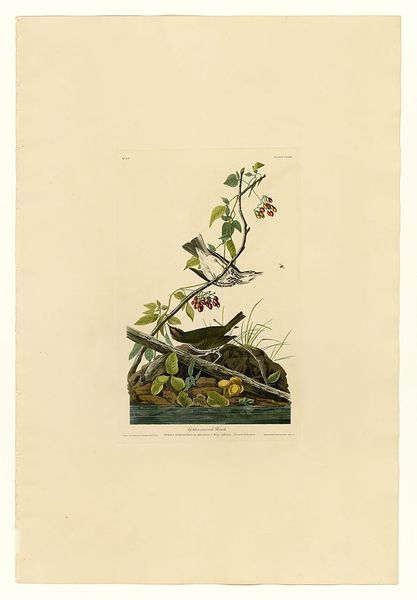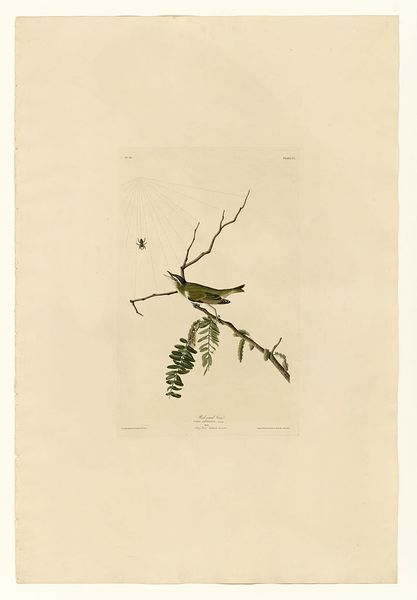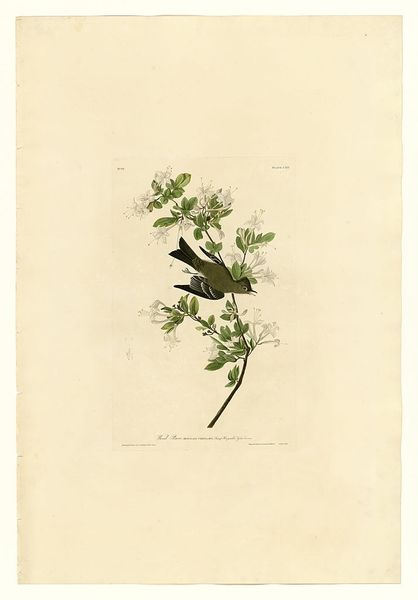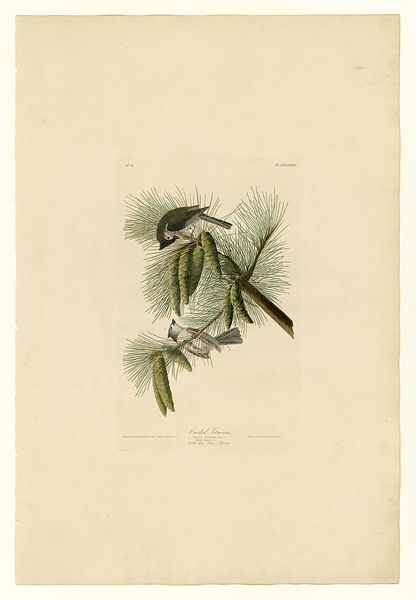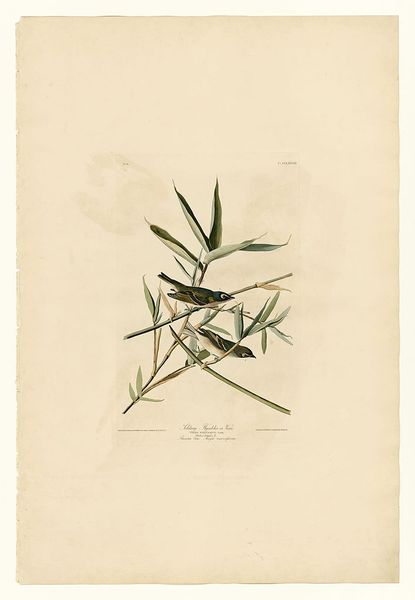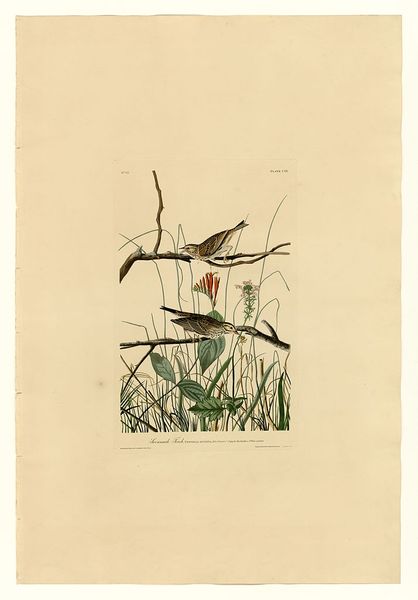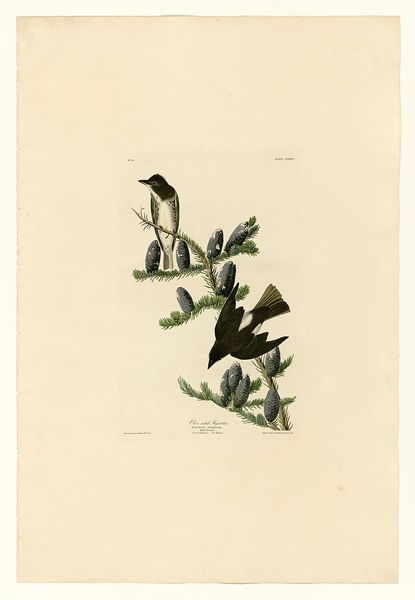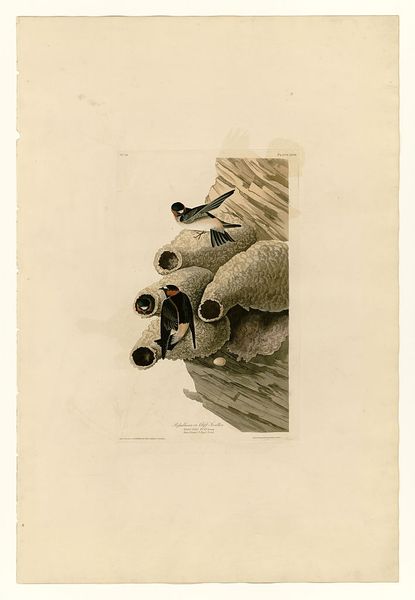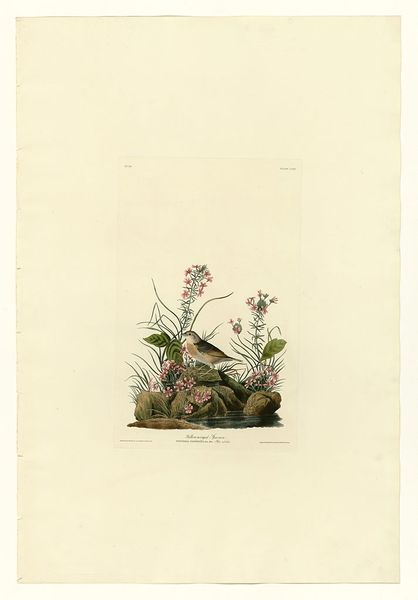
drawing, watercolor
#
drawing
#
fine art illustration
#
landscape
#
bird
#
botanical illustration
#
watercolor
#
romanticism
#
watercolour illustration
#
naturalism
Copyright: Public domain
Curator: Let's turn our attention to this evocative drawing titled "Plate 175 Nuttall's lesser-marsh Wren," attributed to John James Audubon. What's your initial take? Editor: My immediate reaction is focused on texture. Look at the layers of fine strokes that create such distinct visual and tactile experiences, contrasting with the soft watercolor wash. It brings forward questions about the accessibility of natural materials. Curator: Absolutely. It’s important to remember that Audubon's romantic approach was also rooted in an appropriation of nature, mirroring colonial attitudes of dominance over the land and its inhabitants. How do you see that tension playing out here, particularly in his rendering of this domestic space within the marsh? Editor: Well, this rendering normalizes a kind of "nature as resource," while focusing our attention on how that nest was constructed. There is no sign of Audubon reflecting on ecological impact. He emphasizes materials -- marsh grasses and fibers interwoven so cleverly by these birds, almost admiring them as productive makers within their natural habitat, reflecting, maybe, a shared work ethic, however misguided. Curator: Indeed. The image also participates in the era's fascination with classifying and categorizing the natural world. This ties into the broader sociopolitical context of scientific exploration being linked to expanding imperial control, with all of the gender and race-based politics involved. Editor: It strikes me, though, how the detailed depiction of the birds and nest pulls us in closer. Do we romanticize the artistry and work in this nest construction and at what cost to historical reflection? It forces the viewer into questions of labor and admiration. Curator: It certainly is beautiful and intricate, as is its connection to natural spaces, if still a product of human artistic intention. Reflecting on the legacy of this art makes me want to rethink how these marsh spaces figure in a longer environmental conversation. Editor: Agreed. Seeing this illustration, focusing on Audubon's chosen process and natural components reminds me to focus less on singular artworks and think more of global systems, resource depletion, and to question beauty at all costs.
Comments
No comments
Be the first to comment and join the conversation on the ultimate creative platform.


